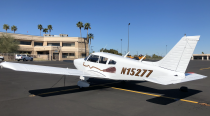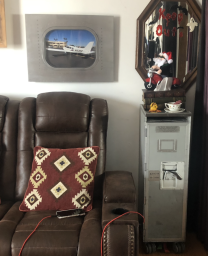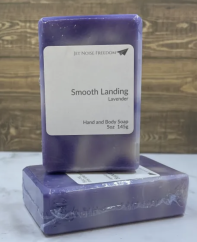
Buy & Sell Aircraft
Adobe Acrobat document [3.5 MB]
Flying Magazine articles dealing with aircraft ownership:
How to Save Big on a Used Airplane
Aircraft Purchasing
Starts out with finding the aircraft that's best for you - deciding what to buy - often hard to differentiate between what you want and what you need - look to mission, as in what you will need 80-85% of the time - consider:
* where you will fly
* how often you will fly
* will you carry passengers
* VFR or IFR
* cost to fly and maintain
* aircraft range
- the purchase process
* inspections
*paperwork
* title services
- insurance
- finalizing the deal
Sharing the cost -
* co-ownership
* flying clubs (more than cost savings, encouragement and information, family activities, AOPA flying club resources)
Where to look -
* Airport Bulletin Boards
* Popular Websites
* Type Club websites (classifieds)
RED FLAGS to beware of
* aircraft that do not meet your defined mission
* logbooks and ownership records that do not agree
* unmanaged corrosion
* aircraft beyond your financial or piloting means
Vref (aircraft value reference)
* for piston equipment
* sales/use tax info
* comprehensive information on most aircraft
* each aircraft is different
* view online or call AOPA - 800-USA-AOPA - 800-872-2672
Financing -
* interest rate depends on amount of loan and type of aircraft
* larger loans get lower rates
* AOPA Aviation Finance - monthly payment calculator - 15-20 year amortization rate - 15% down - 4.75% rate over $100K
6.5% rate under $100K
(roughly equates to $250 a month)
* continuing ownership costs - aircraft operating costs calculator
1. monthly loan payment
2. Maintenance (contact local mechanic) - guide to aircraft inspections
3. Hangar
4. Inspections
5. Fuel/hour
6. Oil change (50-hour interval)
7. additional oil
8. overhaul reserve
9. Maintenance reserves
10. Annual inspection
11. Insurance
12. Database updates
13. Tie-down rental
(Note: ask to see seller's last 2 years for annual inspections breakdowns)
Pre-purchase inspection typically lasts 3-4 hours at $100 an hour
ADS-B units - $2,000 - $5,000 plus installation at 10-15 hours for $100 an hour
Before you buy -
* talk with experienced owners
* have a mechanic do a pre-purchase inspection and flight
* ideally, the mechanic should have experience with that type of aircraft
* thorough logbook review
* preapproval if you are financing (so you can walk into deal already armed with financial backing of a lender - loans could take 4-6 weeks - specific to make and model - usually good for 60 days)
Pre-purchase inspection -
* not necessarily an annual - can vary widely in scope and cost - make it clear what you want done
* review of logbooks and other records including - FAA Form 337 - AD list
* written report of aircraft and logbook review
* decide how to handle discoveries
* schedule a final inspection prior to delivery
Getting an appraisal
- necessary part of aircraft acquisition process
- there are three types of appraisal
1. Pricing guide appraisal
least expensive
least comprehensive
Vref or Aircraft Bluebook
good for 90% of aircraft transactions
analysis is only as accurate as the information put into it (so it's subject to biases from lender perspective, seller perspective and buyer perspective)
not part of this appraisal are the nuanced differences between actual market values based on current demand versus costs for things such as STC modifications, avionics and engine monitoring upgrades, and interpretation of paint and interior quality
2. Desktop appraisal
done by a certified appraiser
they may start with the pricing digests but then expand their analysis to include market data
they look at comparable sales, type-specific trends, average "days on market" for similar aircraft
more sophisticated, more powerful aircraft garner additional appraisal criteria
typically costs $500-$600
3. Physical appraisal
most extensive, most hands-on, most precise way to appraise an aircraft
most expensive - about $2,000-$4,000
similar to a pre-buy inspection
combines all aspects of desktop and pricing guide appraisals with an actual on-site inspection of the aircraft
ideal for unique, "orphan" or highly modified aircraft
bulletproof assessment of an aircraft's true value
Legal issues -
* get your agreement in writing before pre-purchase inspection (sale of goods $5000 or more)
* use an aviation attorney in state of delivery/aircraft will reside
* AOPA PPS legal services plan includes a 1-hour consultation, which can be used for your purchase agreement - $49/year (PPS plus includes 2 hours for $99)
* include in the sales contract:
1. Identification of parties
2. Aircraft description
3. Price
4. Deposits (refundable or not)
5. Closing (use title and escrow services - have parties split cost
6. Contingencies
7. Delivery of aircraft
8. Transfer of title/risk of loss
9. Taxes
10. Title warranties
11. Pre-Purchase Inspection
12. Aircraft condition (as is - with all faults)
13. Agreement modifications
14. Dispute resolution and governing law
Pitfalls to avoid -
* names must exactly agree on bill of sale and registration
* Aircraft registration - Form 8050-1 - must be original - no copies
* PO Box must include a physical location
* possible title liens
* risk of fraud without escrow service
Aircraft Title and Escrow Services - Aero Space Reports
* title search package includes title search - complete aircraft records - accident/incident history
* $95/AOPA members - 2-day turn-around
* title clearing, if necessary
* title insurance
* closing - escrow instructions - document filings
* aircraft title and escrow services
Insurance
* limits of liability and hull
liability: highest you can reasonably afford
hull: replacement value of aircraft
* named and approved pilots (unless open pilot clause)
* be aware of terms particular to your operation (e.g. business and pleasure, industrial aid, etc.)
* know sublimits or per passenger or smooth
* for over 20 years have insured more GA aircraft - including light sport, turbine, and experimental planes - than anyone else in the world
* have access to all major carriers with "A" ratings and will provide you with coverage options to fit your needs
Bill of Sale
complete blue areas
seller must sign in ink
FAA does not care about amount
Sales and Use Tax
* laws vary by state - aircraft is taxed in the state where it is based - take delivery - NOT PURCHASED - look for flyaway exemption 10-15 days)
* personal property tax in some states - can vary by county and city as well
* State use tax could be as high as 8-9%
Note: states regularly check FAA registry and FBO-based aircraft list
Arizona DOT - aircraft services
Federal Income Tax
* business use - profit motive - ordinary, necessary, and reasonable - actual deductions are for % of hours that are business
Final Inspection
* visually inspect the aircraft before signing
* no damage since the pre-purchase inspection
* all contract conditions fulfilled
* transfer necessary documents
FAA paperwork to send - aircraft certification
* 8050-1 - Registration application - takes 3-6 weeks - temporary registration good for 90 days
* 8050-2 - Bill of Sale
* 8050 -3 - Existing registration from aircraft (previous owner signs the back of the form)
* $5 recording fee - check made out to FAA
Note: airworthiness certificate stays in aircraft
For LLCs or Corps: Have statement of support of the Registration of US civil aircraft in name of LLC
However, a federal law exists to preempt these state laws and protect owners, lessors, and financers, as long as certain conditions are met. Yet owners must remain cautious, as some courts may still disagree about the law’s intent and the protection it provides.
49 U.S. Code Section 44112 Limitation of Liability states, in part, that a “lessor, owner, or secured party is liable for personal injury, death, or property loss or damage only when a civil aircraft, aircraft engine, or propeller is in the actual possession or operational control of the lessor, owner, or secured party.” Most cases about this law involve arguments about what Congress intended the law to do, inevitably turning into painstakingly detailed discussions of the legislative history of the 1948 federal law that would eventually become present-day Section 44112.
The predecessor of Section 44112 was enacted in 1948 in response to some states adopting the Uniform Aeronautics Act, which declared that the owner of every aircraft was “absolutely liable” for injuries caused by the aircraft’s flight regardless of the owner’s degree of control of the aircraft. Concerned this would stifle the aviation industry, Congress passed the 1948 statute to limit this liability. Recodifications and modifications were made in 1958 and 1994, which among other changes, added definitions for “lessor” (leasing at least 30 days), “owner,” and “secured party.”
Many state and federal courts that have considered the law ultimately concluded that it preempts conflicting state statutes and common law claims, but such cases often involve a fact-specific analysis to determine that the owner, lessor, or secured party did not have actual possession or operational control of the aircraft at the time of the accident. Although not defined by statute, “operational control” is defined by FAR 1.1 as “the exercise of authority over initiating, conducting or terminating a flight.” (See “For the Record: Who’s In Control Here?” March 2020 AOPA Pilot.)
Unfortunately, some courts have adopted nuanced interpretations of Section 44112 that limit its preemptive effect, with some notable examples leading Congress to amend the statute once more to preserve its original objective. One such case involved a prior, but substantially similar, version of the law that provided an aircraft owner or lessor was liable “for personal injury, death, or property loss or damage on land or water.”
In that 2011 case, the Florida Supreme Court limited the preemptive effect of the law depending on whether the injured party was on the ground or a passenger on the aircraft. The case involved the crash of a leased airplane that killed the pilot and the only passenger. The estate of the passenger sought to hold the aircraft’s owner liable by relying on Florida’s “dangerous instrumentality” doctrine, which imposed strict liability on the owner of a motor vehicle (including aircraft) who gave express or implied consent to the operation. The court, focusing on the “death…on land or water” language in statute at the time, concluded that Section 44112’s “limitation on liability would apply only to individuals and property that are underneath the aircraft during its flight, ascent, or descent,” and the claim against the owner was not preempted because the passenger died inside the aircraft that crashed, rather than while standing on the ground. A dissenting judge stated the interpretation “defies reality” as the passenger was in the aircraft and died when it hit the ground.
In 2018, Congress passed an FAA reauthorization that eliminated “on land or water” from Section 44112—but there remains the possibility that future courts may adopt other unexpected interpretations that may again limit the law’s preemptive effect. Such decisions would likely have significant implications relating to insurance and ownership entity choice for aircraft owners.
Aircraft owners should remember that while Section 44112 may limit liability, it probably won’t prevent a lawsuit from being filed. When an owner raises Section 44112 as a defense, it will likely result in the court closely scrutinizing the facts as to who had actual possession or operational control at the time of the accident.
For now, owners who lease their aircraft should include lease terms transferring operational control to the lessee (and make certain that lessees truly exercise operational control), ensure their insurance policy has appropriate liability coverage, and remain vigilant when negotiating indemnity clauses and insurance provisions with a prospective lessee of an aircraft.
Adobe Acrobat document [58.3 KB]
14 CFR 47.3(b) prohibits you from operating an aircraft that has not been registered to its owner - if the paperwork on the transaction is not perfect this operates to ground the aircraft until the imperfection is corrected
The buyer should also receive a lien release signed by all lienholders who are executing these releases in exchange for that portion of the sale proceeds covering the balance of the debt still owed them
If the contract of sale has not been signed it must be signed by both buyer and seller at the closing
If you are financing the purchase of the aircraft the lender will require you to sign a promissory note and a security agreement giving the lender a security interest in the aircraft to secure payment of the loan
FAA Aircraft Registration Application
application for aircraft radio station license
National Oceanic and Atmospheric Administration (NOAA)
AOPA July 2017 - Tuning up your tax smarts
Depreciation recapture is the USA Internal Revenue Service (IRS) procedure for collecting income tax on a gain realized by a taxpayer when the taxpayer disposes of an asset that had previously provided an offset to ordinary income for the taxpayer through depreciation. In other words, because the IRS allows a taxpayer to deduct the depreciation of an asset from the taxpayer’s ordinary income, the taxpayer has to report any gain from the disposal of the asset (up to the recomputed basis) as ordinary income, not as a capital gain. Any gain over the recomputed basis will be taxed as a capital gain in accordance with section 1231 of the Internal Revenue Code (IRC). Depreciation recapture in the USA is governed by sections 1245 and 1250 of the IRC.
A capital gain is a profit that results from a disposition of a capital asset, such as stock, bond or real estate, where the amount realised on the disposition exceeds the purchase price. The gain is the difference between a higher selling price and a lower purchase price. Conversely, a capital loss arises if the proceeds from the sale of a capital asset are less than the purchase price. Capital gains may refer to "investment income" that arises in relation to real assets, such as property; financial assets, such as shares/stocks or bonds; and intangible assets.
Helicopter Association International - Helis for sale
AOPA Buyer's Guide for used aircraft
AOPA Tips on Starting a Flying Club
AOPA Sample Aircraft Purchase/Sales Agreement
Feb 2016 - Flying Magazine - Cutting the Cost of Airplane Ownership
Microsoft Power Point presentation [614.5 KB]
Microsoft Power Point presentation [1.2 MB]
Microsoft Word document [14.5 KB]
Form 8050-1 Aircraft Registration Application
Form 8050-2 Aircraft Bill of Sale
Form 8130-3 Authorized Release Certificate - Airworthiness Approval Tag
Form 8050-98 Aircraft Security Agreement
Form 337 - Major Repair and Alteration
Adobe Acrobat document [78.4 KB]
Adobe Acrobat document [59.0 KB]
Adobe Acrobat document [14.3 KB]
Adobe Acrobat document [26.3 KB]
Adobe Acrobat document [36.8 KB]
Adobe Acrobat document [37.3 KB]
Adobe Acrobat document [72.7 KB]
Adobe Acrobat document [396.0 KB]
Adobe Acrobat document [36.5 KB]
Adobe Acrobat document [8.9 KB]
Adobe Acrobat document [44.9 KB]
Adobe Acrobat document [290.1 KB]
Adobe Acrobat document [19.2 KB]
Adobe Acrobat document [277.9 KB]
Adobe Acrobat document [17.1 KB]
Adobe Acrobat document [23.7 KB]
Adobe Acrobat document [66.2 KB]
Adobe Acrobat document [64.2 KB]
Adobe Acrobat document [52.8 KB]
Adobe Acrobat document [219.4 KB]
Adobe Acrobat document [12.6 KB]
Adobe Acrobat document [13.9 KB]
Adobe Acrobat document [36.4 KB]
Case 52: United States v. Malago, 2012 WL 4378102 (S.D. Fla. 2012)
Contact Me
Sarah Nilsson, J.D., Ph.D., MAS
602 561 8665
You can also fill out my
Get Social with Me
Legal Disclaimer
The information on this website is for EDUCATIONAL purposes only and DOES NOT constitute legal advice.
While the author of this website is an attorney, she is not YOUR attorney, nor are you her client, until you enter into a written agreement with Nilsson Law, PLLC to provide legal services.
In no event shall Sarah Nilsson be liable for any special, indirect, or consequential damages relating to this material, for any use of this website, or for any other hyperlinked website.
Steward of
I endorse the following products
KENNON (sun shields)









